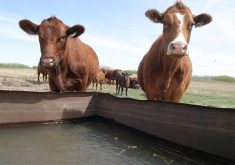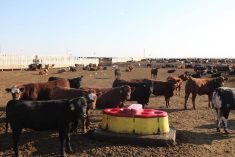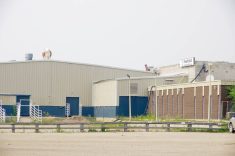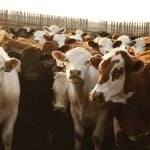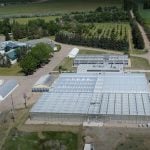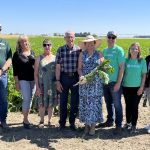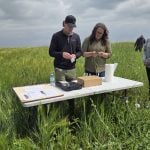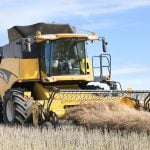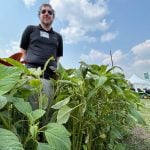LETHBRIDGE – Hidden among coulees and dry prairie hills on the west side of Lethbridge is one of Canada’s busiest animal disease laboratories.
Established in 1905 as an Agriculture Canada animal disease research institute, it was a quarantine station for horses with special attention devoted to dourine, a type of equine venereal disease.
A century later, this Canadian Food Inspection Agency facility contains a Level 3 laboratory and research facility looking at a variety of livestock wildlife and human diseases, said Stacy Tessaro, head of virology and quality assurance at the station.
Read Also
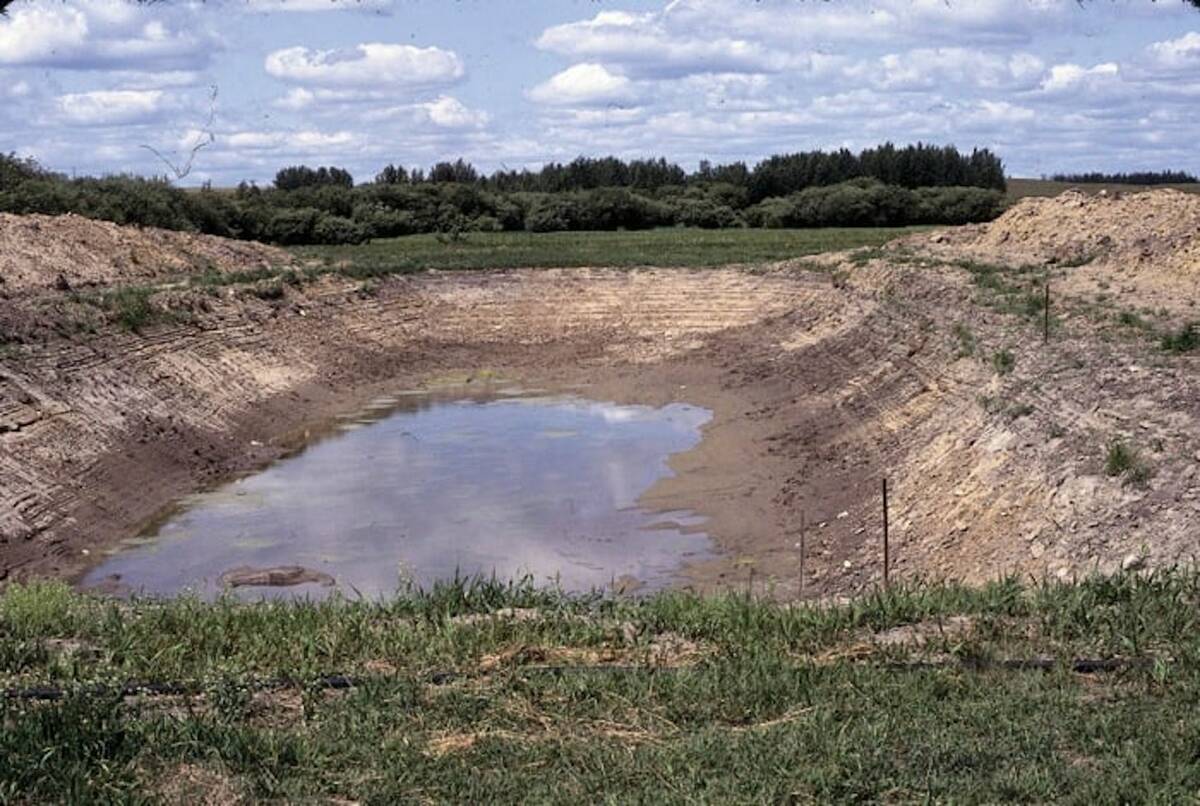
Dry summer conditions can lead to poor water quality for livestock
Drought conditions in the Prairies has led to an decrease in water quality, and producers are being advised to closely monitor water quality for their animals.
“We are the busiest testing lab in Canada,” he said.
Last year, more than 170,000 diagnostic tests were completed here. The centre handles all rabies testing for Western Canada including the northern territories. It also has world animal health organization reference laboratories for IBR, bovine viral disease and is a North American reference laboratory for anthrax.
It tests brain samples for BSE in cattle, chronic wasting disease in deer and elk and scrapie in sheep, making it the busiest lab in Canada diagnosing these neurological conditions.
Tests have been developed to look for BVD and IBR in in vitro fertilized embryos destined mainly for the Chinese Holstein market. The Lethbridge lab may do as many as 50,000 tests per year.
So far, Europe has not expressed interest in this technology.
Other research and diagnostics include foot-and-mouth disease, hog cholera, also called classical swine fever, and other more common animal conditions that may affect trade like brucellosis, anaplasmosis and leptosporosis.
A large part of the lab’s duties include certification of Canada’s livestock disease status. The majority of animals and genetics for export are clean and healthy, but this facility is able to certify disease-free status by checking blood samples for a variety of viruses.
For example, Canada is free of brucellosis, but tests are still conducted for some trading partners who want to certify livestock or livestock products for export.
In the case of brucellosis, the only reservoir for this disease is within a bison herd in Wood Buffalo National Park.
“Because of that, we maintain intensive surveillance of livestock in northern Alberta,” said Tessaro.
Anaplasmosis is checked using the ELISA test on blood samples. As trade in cattle with the United States increases, this is necessary to ensure Canada remains free of the blood disease and takes eradication steps if it does appear.
One of the advantages of this facility is its relative isolation on 31/2 sections of land. Few people are aware of its presence.
It is self contained and can produce electricity and water on site.
From the outside, the centre does not look much different from a normal office building, but windows are coated with a non-breakable substance to prevent break-ins. The threat of bioterrorism is regarded seriously and precautions are taken to keep the site secure.
Since laboratory staff handles a variety of infectious organisms, they must take special precautions to protect themselves. In some cases the viruses and other diseases are so virulent that the scientists must wear full protective gear over their entire bodies and breathing apparatuses while enclosed in rooms with specially controlled atmospheres.








